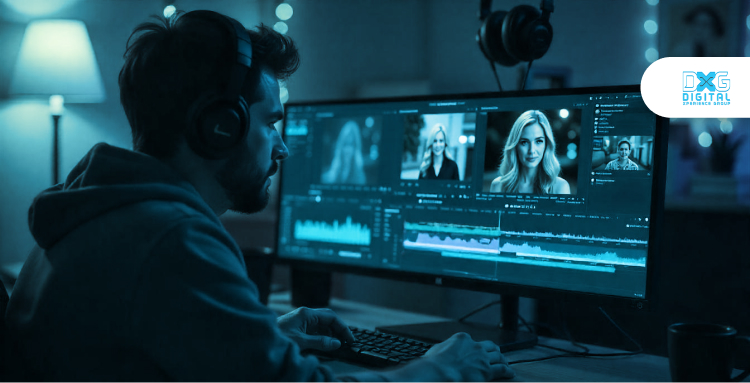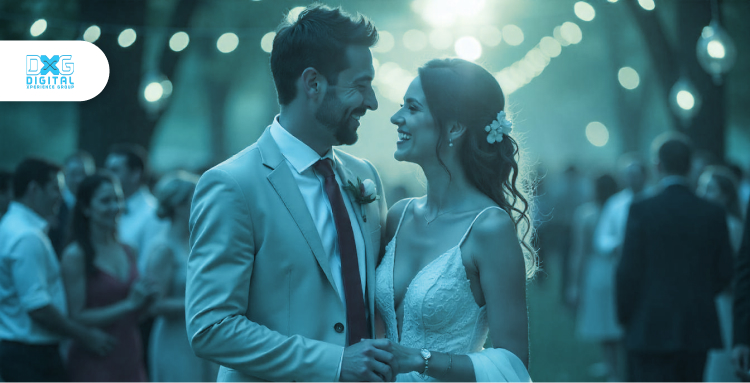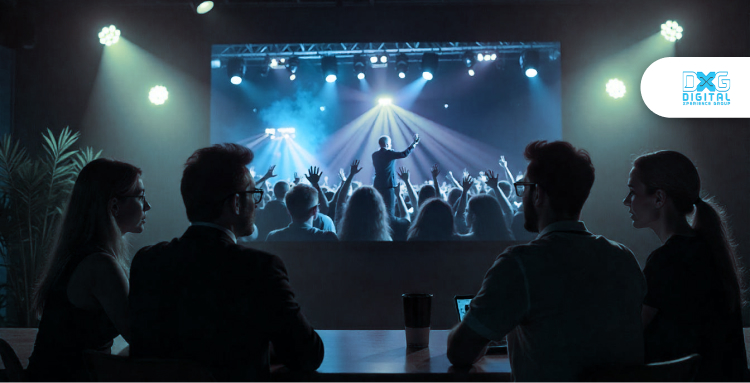


May 15, 2025
Long after an event ends, people often hold onto a short video clip. A quick moment on their phone brings back all the energy, fun, and emotions of the day. That’s the real power of an event highlight video.
In this guide, you’ll learn how to create an event highlight video that tells a story, engages your audience, and keeps your event alive long after it’s over.
Planning ahead helps you capture the best moments and ensures your video flows well. Taking time to prepare will help you make the most of the event and create a video that tells the story you want. Here's how to approach it:
Understand your audience and goals for the video
Think about who will be watching and what you want the video to achieve. Are you making it for social media? Or do you want a special memory for attendees or a way to promote future events? Knowing your goals will help you decide what moments to focus on.
Identify moments to capture
Look for the moments that stand out and truly represent the event. Whether it's a powerful speech, an exciting performance, or meaningful interactions, these are the moments that will connect with viewers and make the video memorable.
Set up a shooting schedule and plan for varied footage
Don't film everything randomly. Plan when and where you want to capture specific moments. Having a schedule will help keep things organized. Also, make sure to mix up your shots—get wide shots to capture the atmosphere and close-ups to show reactions. A variety of shots will keep the video engaging.

Now that you’ve planned everything out, it’s time to start filming. To make sure your highlight video is exciting and interesting, here’s how you can capture great footage:
Wide shots: Establish the event atmosphere
Wide shots are great for setting the scene. Use them to show the size of the venue, the crowd, and any special details like décor or stage setups. These shots help give viewers a feel for the overall vibe of the event.
Close-ups: Capture emotional reactions and important details
Close-ups are essential for showing the emotions of the moment. Whether it’s the excitement on someone's face, a touching exchange, or a special moment like a toast or handshake, close-ups bring those personal reactions to life.
Varied angles and shots: Keep the footage dynamic and interesting
Mixing up your shots will keep things fresh. Use different angles to capture the action from multiple perspectives—whether it’s shooting from above, moving through the crowd, or switching from the stage to the audience. This variety will make your video more engaging to watch.
Tips for good lighting and sound during filming
Lighting can make a huge difference. Try to avoid harsh shadows or overexposed areas. If you're filming indoors, make sure the room is well-lit, especially on faces. Also, pay attention to the sound—use a good microphone if you can, and try to minimize background noise to make sure the audio comes through clearly.
Additionally, when creating videos for public sharing, it's good practice to ensure they are accessible to all viewers, including those with hearing impairments. You can learn more about video accessibility guidelines from the Americans with Disabilities Act (ADA).
Once the event is over and you’ve got all your clips, the next step is to get everything in order. A little organization goes a long way when it’s time to start editing.
Sorting through the footage to identify moments worth using
Go through all your clips and pick out the moments that stand out — the ones that tell the story of the event or bring out the energy of the day. It could be big moments like a performance or speech, or smaller details like people laughing or having a good time. Create folders or labels so everything’s easy to find later.
How to prioritize impactful moments in your video
Think about what will matter most to your audience. Start with scenes that grab attention right away. Then, follow with moments that show the heart of the event — the fun, the connection, and the highlights people will want to remember. Keep the video flowing naturally so it feels like a real experience, not just random clips stitched together.
Important Note on Compliance: If your event featured public figures or took place in public spaces, ensure you're aware of legal guidelines on video footage and privacy laws. For more information on these regulations, visit the U.S. Copyright Office.

Music can really set the tone for your highlight video. The right sound can turn simple clips into something that feels exciting, emotional, or fun to watch.
Choosing the right background music for different moods
Pick music that matches the vibe of your event. If it was a lively celebration, go for something upbeat. If it was more formal or emotional, choose something softer or inspiring. The music should feel like it belongs with the moments you’re showing.
Syncing music with footage for better engagement
Try to line up your video clips with the beat or changes in the music. For example, when the music builds up, you can show exciting scenes or fast-paced shots. When it slows down, switch to emotional or quiet moments. To avoid copyright infringement, you can refer to the U.S. Copyright Office's guide to using music in videos.
Using sound effects to enhance specific moments (applause, reactions)
Little sound effects can make your video feel more real and lively. Adding things like applause after a speech, laughter during a funny moment, or crowd noise during a performance is important. These can help pull people into the scene and make them feel like they’re part of the event.
Editing is where everything comes together. A well-edited video keeps people watching and helps tell the story in a way that feels natural and enjoyable.
How to start strong with an engaging intro
Grab attention right from the first few seconds. Start with a moment that feels exciting, emotional, or visually interesting — something that pulls people in and makes them want to see more. It could be a quick montage, a crowd cheer, or a behind-the-scenes clip.
Editing tips for concise and impactful videos (1-3 minutes)
Keep it short and sweet. Focus on the best moments and leave out anything that doesn’t add to the story. Most people prefer videos that get to the point quickly, so aim for a video length between one to three minutes if possible. Show variety, just don’t overload it.
Creating smooth transitions for a consistent experience
Make sure your clips flow naturally from one to the next. Use simple transitions like fades or quick cuts to keep things moving without feeling choppy. The goal is for the viewer to stay focused on the story, not notice the edits. A good flow keeps the energy up and makes the video feel polished without being distracting.

Adding text and graphics helps give your video some extra polish while also making it clearer and informative for viewers.
How to include text overlays (names, titles, location)
Use text to quickly share helpful details without needing to explain them out loud. You can add someone’s name and role during a speech, show the location of the event, or highlight a special moment with a simple caption. Keep it clean and easy to read.
Including subtle branding (logos, event details)
If the video is for a business or organization, it’s a good idea to include a logo or event name somewhere in the video. This can be placed in a corner or shown at the beginning or end. Keep it small and tasteful so it doesn’t distract from the footage.
Adding a call to action for future engagement or events
At the end of your video, let people know what they can do next. It could be as simple as “Follow us for more events,” “Visit our website,” or “Save the date for next year.” A gentle reminder encourages people to stay connected without feeling pushy.
Storytelling makes your video feel more personal and meaningful. It turns random clips into a story people care about. Show moments that capture real emotions — like laughter, cheers, or quiet, heartfelt reactions. These little details help people connect with the video and remember how the event felt, not just what happened.
Watch your video carefully and look out for any mistakes or anything that feels off. Make sure the visuals, sound, and text all work well together. Share it with a few people you trust and get their honest feedback. Small suggestions can help you make the video stronger before sharing it with a bigger audience.
Have a look at the related posts to know more details
Learning how to create a compelling event highlight video is a great way to showcase your event's best moments and promote it effectively. By sharing your video on social media, you can expand its reach and encourage engagement through likes, shares, and comments, boosting visibility.
A well-made highlight video is also a powerful tool for generating interest in future events. If you need help creating an engaging event highlight video, Digital Xperience Group can assist you in enhancing your event footage and boosting your online presence. So, contact us today to get started.